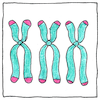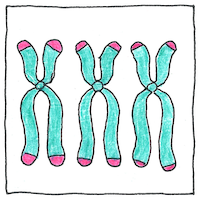Leonard Hayflick
cell biology

|
Hayflick limit
A cell doesn’t live forever. Leonard Hayflick showed it divides between 40 and 60 times and then dies. Which has certain bearings for those of us who are made of cells. In his book on the genetic causes of ageing, Macfarlane Burnet coined the term “Hayflick limit.”
Replication in a dish
Most people had thought the reason cells in petri dishes eventually died was that they didn’t get the right nutrients or their dishes became contaminated, but otherwise they should live forever. Alexis Carrel had kept cells from chicken hearts alive for 34 years and didn’t admit his daily nutrient solution could have contained embrionic stem cells, which would have renewed his population. But Leonard Hayflick saw signs of ageing so he collaborated with Paul Moorhead to eliminate non-genetic causes. They mixed old male human fibroblasts with young female human fibroblasts, keeping unmixed populations as controls. In the mixed culture any error or virus would affect both male and female cells; however, the male cells died well before the female cells.
Senescence
I feel the time is passing. I feel my memory has slipped into deeper shadows. Everyone is ageing at the same rate, I say, but what do I know about others’ ageing or the fragility of the genome, or the accumulation of mutations, or antatonistic pleiotropy, or the advantages of dying young. I’m just a poor sample, statistically speaking, with a finite chance of bucking actuarial tables.



Alexis Carrel lived to 71; obviously he didn’t discover the secret to eternal life.
See also in The book of science:
Readings in wikipedia: